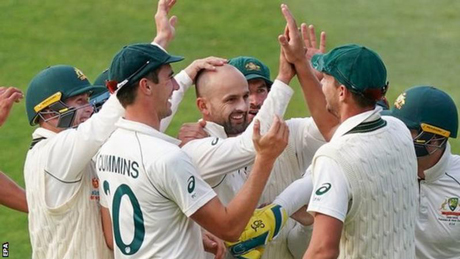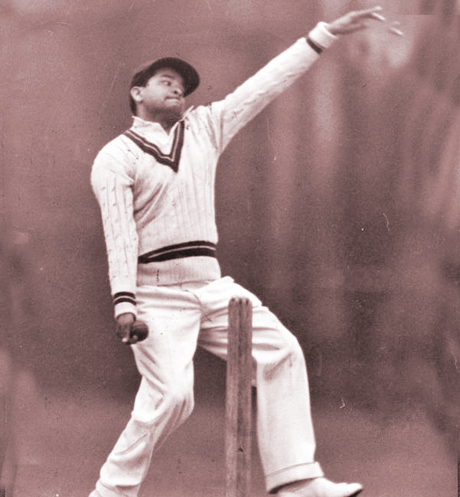December 4 2019 issue
Cricket

Ontario RoundArm Softball Cricket Association (ORSCA) held its 9th Annual Awards Gala at the Sagan Banquet Hall in Mississauga on November 9th. This year’s gala turned out to be the league’s best attended and the most successful event in its history.
Speakers in attendance were the Guyana Consul General Ms. An-yin Choo, businessman Mr. Mani Singh and ORSCA’s founding member and current President Mr. Arvin Persaud.
Masters had a sensational year, winning the Grand Championship for the first time since joining ORSCA four years ago. They were the finalist in the “TEST” Championship, the semi-finalist in the T10 Championship and played unbeaten during the regular season by winning all 13 games.
Rajkumar (Bobby) Budhram was awarded the prestigious League MVP trophy for 2019. He was the league’s highest run scorer with 715 runs, which included four centuries and four half centuries at an astonishing average of 102.14. He struck 82 epic sixes throughout the tournament, an honor he shared with the big hitting Randy Roopnarine from the Smashers team.
Cambridge Jaguars took home the Grand Champion runners up Award, with Vijay Jhappan stealing the batting show in the final with a blistering knock of 87 to share the MVP spoils.
Top Batsman awards were also given to: Ramiz Mohamed for being East Zone top Scorer (645 runs), Rajkumar (Bobby) Budhram – West Zone top scorer (715 runs), Amir Khan – North Zone top scorer (482 runs) and Munir Bashir – South Zone top scorer (635 runs). Munir Basher was also awarded the trophy for the highest individual score, 168 runs vs Jays Hawk.
Jeetendra Beharry (SCW) was the league’s most economical bowler for the second straight year, with an RPO of 2.63. Naresh Bhagwandin took home most successful bowler award with 29 wickets, which included four “4-wicket” hauls.
Naurang Brigmohan, the most successful South Zone bowler with 19 wickets, also won the award for the best bowling spell – 8 wickets for 8 runs vs Panthers. Top Bowlers awards also went to Romesh Persaud, North Zone with 18 wickets; Ricky Sukhai’s 24 wickets was the best for the East Zone.
Steel City Warriors retained their T10 crown for the third consecutive year.
Pegasus took home the T20 Test championship and were the T10 runners-up. Damodar Daesrath, Pegasus run master, was in belligerent form hitting seven centuries and one half century.
The hard working ORSCA board is already busy with preliminary planning for next year’s events, when the league is expected to celebrate its’ 10th anniversary. The date for this “Grand Gala” in 2020, which is expected to be a showcase event, will be announced soon, along with the program highlights for the upcoming year.
The next AGM meeting of the Team Reps and stakeholders is set for February 16th. 2020 at 3pm. Final details to be announced soon on www.orsca.ca along with team registration information for the 2020 season.

Australia beat Pakistan by an innings and 48 runs in the second Test at Adelaide Oval on Monday to sweep their two-Test series 2-0.
Pakistan lost their last two wickets after the dinner-break to be bowled out for 239 in their second innings, having been called to follow on by Tim Paine's side.
Nathan Lyon finished with innings best figures of 5-69.
At the dinner break in Adelaide, Pakistan were 229 for eight – still needing to score another 58 to make the hosts bat again.
Pakistan resumed day four on a precarious 39 for three with Masood not out 14 and Shafiq on eight after being bowled out for 302 in their first innings and forced to follow on.
It followed Australia's mammoth 589 for three declared, built around David Warner's exceptional 335 not out – the 10th highest Test score of all time.
Needing 248 to make Australia bat again and avoid a second successive innings defeat, they made a decent effort to reach the milestone. Mohammad Rizwan, in only his third Test, was not out 40. Masood made 68 and Shafiq 57.
While Lyon extracted some life out of the pitch, it offered little for Australia's fast bowlers who were made to toil.
They will be able to take the new pink ball shortly and with the lights coming on, it should offer them more conducive conditions to finish the job.
Masood, who models himself on England's Alastair Cook, played some glorious strokes, including a six off Lyon, as he assumed a leadership role after Babar Azam and captain Azhar Ali fell cheaply on Sunday evening.
His sixth Test 50, in his 17th Test, arrived with a boundary off Lyon, his sixth four, before he chipped the spinner to mid-off where Mitchell Starc collected an easy catch.
Shafiq, who has 12 Test hundreds to his name, proved to be Masood's equal and brought up his 25th half-century with a single off Josh Hazlewood.
But Lyon struck again, with Shafiq getting a thin edge to a flighted ball that carried to Warner at slip, before he then removed Iftikhar Ahmed, caught at short leg by Marnus Labuschagne for a battling 27.
Surprise first-innings century-maker Yasir Shah could not repeat the heroics and was Lyon's next victim, out lbw for 13 after a review.
Shaheen Afridi became his fifth, caught at mid-off by Hazlewood on the last ball before dinner, with Australia on the cusp of inflicting another heavy loss on Pakistan after their innings and five runs defeat in the first of the two-Test series at Brisbane.
Australia won the first Test in Brisbane by an innings and five runs. Pakistan have been defeated in 13 consecutive Tests on Australian shores.
cut short
Warner became the seventh Australian batsman to bring up three figures on day two and finished with the 10th highest score of all time after his 418-ball epic.
The left-hander moved just past the 334 scored by the immortal Don Bradman in 1930 and matched by former captain Mark Taylor’s unbeaten 334 away to Pakistan in 1998.
Among Australians, Warner now ranks second only to Matthew Hayden’s 380 against Zimbabwe at Perth in 2003.
With Warner scoring at a rapid strike-rate of 80.14, Lara’s 400 against England in 2004 seemed there for the taking as the man nicknamed ‘Bull’ punished a demoralised Pakistan attack.
Batting partner Matthew Wade was providing good support at the other end and there were seven wickets in the bank.
Yet with rain forecast in the coming days, sentimentality was shoved aside as Paine declared the innings closed at 589 for three, giving his bowlers a few overs before the dinner break.
The skipper may have felt exonerated when Pakistan collapsed to 96-6 at stumps on Saturday in a dreadful reply.
Warner, himself, said he had no regrets but admitted he was thinking about Lara’s record as he motored past 300.
“If the boundaries were a little bit shorter, I might have taken them on a bit more,” Warner told broadcaster Fox Sports. “Wadey [Matthew Wades] kept on saying to me at the other end, let’s not run too hard and run ourselves out.”
He said he had more regrets when dismissed for 253 in Perth against New Zealand in 2015, having been in rollicking form with a fast WACQA Ground outfield.
He now holds the distinction of being one of only three Australians to score more than 250 twice, the others being Bradman and former captain Michael Clarke.
It is exalted company for a man fingered as the mastermind of the ball-tampering scandal at Newlands last year, which scandalised a nation and saw him banned for 12 months along with former skipper Steve Smith.
Smashing 154 in the first Test in Brisbane, Warner now has 489 runs for the series, an outrageous rebound from his gloomy Ashes when he mustered just 95 runs and was preyed upon by Stuart Broad and jeered relentlessly throughout by the English crowds.
Warner said he wanted to produce a ‘massive statement’ upon returning home, having missed the previous Australian summer while serving his ban.
He and Marnus Labuschagne did that as they combined for a 361-run partnership, a second-wicket record in Australia, before the blossoming number three was bowled for 162.
“There was poor form in England,” said Warner. “But to come back here in Australia, put some back-to-back performances on the board, have that consistency and start the summer well for our team, that’s what I was more proud of myself for.”
series parity

Ross Taylor, his 19th
Kane Williamson and Ross Taylor capitalised on an end-of-term vibe on the final day at Hamilton, racking up a brace of centuries in an unbroken 213-run stand to ensure that New Zealand claimed the spoils in this two-Test series, thanks to their innings victory at Mount Maunganui last week.
Having gone to lunch on 96 and 84 not out respectively, Williamson and Taylor resumed after the break with an urgent mindset, knowing full well that a heavy band of rain was sweeping in from the west and that the contest was bound to be stopped sooner rather than later.
Sure enough, Williamson hurtled to his century in the third over of the session – though not before he had all but run himself out on 97 with a suicidal single to mid-off – before Taylor converted in style with spots of rain already in the air, dropping to his knees to flog Joe Root over midwicket for four, six, six in consecutive balls, to secure his 19th Test hundred in the nick of time.
The match was interrupted two balls later, and finally called off after a two-hour delay that redefined the parameters of futility. Nevertheless, the context of the finish couldn't undermine New Zealand's fine achievement, as they secured their second home series win against England in consecutive visits, and extended England's barren run of Test results in the country to seven matches and counting.
There had never been much doubt that the final day would be a stalemate, but Williamson and Taylor had begun with their side in a bit of strife, still trailing by five runs overnight and knowing that a flurry of early wickets could yet have given England a chance to put their foot in the door on the final day of the series.
That prospect never materialised, as the combination of a lifeless wicket and a tired England attack combined to give both men a chance to bed in from the outset. In the course of his innings, Taylor became only the second New Zealand batsman, behind Stephen Fleming, to pass 7000 runs, and he also racked up his 1000th at Seddon Park alone.
Apart from the chance to close out a notable series win, the partnership was a vital chance for New Zealand's two senior batsmen to get time in the middle before their next big encounter - the first Test against Australia in Perth that gets underway in just over a week's time.
England opened their day's work with Sam Curran and Ben Stokes in harness, the latter opting for a short-pitch assault from round the wicket to cramp both batsmen for room. That tactic might have reaped an early reward in the fourth over of the day, when Williamson - on 39 - gloved a lifter down the leg side. Unfortunately, Ollie Pope behind the stumps was too flat-footed to take advantage, tumbling late to his left and shelling the opportunity.
If that was a bad miss, however, it was nothing compared to the incomparable low-light of the morning - a dropped catch so ghastly that it is sure to be replayed in Christmas compilations and Twitter memes for evermore.
The moment came in Jofra Archer's third over of the morning, with Williamson by now on 62 and easing sweetly through his gears. Archer, who has endured a tough campaign with just a solitary wicket in each of the two Tests, decided the time was ripe to roll out his variations, rather than beat a hole in the middle of an unresponsive wicket and attempt to challenge the speed gun.
So out came a superbly subtle knuckleball - Archer even changed his grip midway through his run-up, then dropped his front arm in his delivery stride to add a further layer of bafflement to what was about to come. Williamson responded with a startled prod to midwicket, raising his hand in apology to his team-mate as the bowler set off on a victory gallop, arms outstretched and smile as wide as it has been all match.
But moments later, he was obliged to look back in horror and disbelief, as Joe Denly made an unfathomable Horlicks of a chance that an under-eights fielder would have been embarrassed to let through his fingers. The ball had lobbed to him as if being returned from the slip cordon at the end of an over - and it slipped like a buttered crumpet clean through his grasp.
It was an iconically desperate moment - quite possibly the easiest chance dropped by an England fielder since Mike Gatting shelled Kiran More at Madras in 1992-93, a lob off the splice that he tried to blame on the sun in his eyes. And the reactions were priceless. Stuart Broad threw his hands to his mouth in horror, Stokes at deep midwicket turned on his heel mid-celebration and averted his gaze. Williamson himself raised a quizzical eyebrow and allowed himself a wry grin.
And the effect of that let-off on what remained of England's competitive juices was like a drawing pin on an inflatable dinghy. Denly himself entered the attack soon afterwards for an apologetic (but actually quite serviceable) six-over spell of legspin, and Chris Woakes came and went in another economical but fruitless burst.
Aside from a Stokes bouncer that rattled Williamson on the helmet, and another iteration of the pair's sketchy running between the wickets, the only real jeopardy for either batsman concerned the encroaching bad weather, and their own quest for milestones. Williamson suddenly upped the ante with lunch approaching, pulling a brace of boundaries through square leg to race to 96, and was grateful to get just enough cricket in after the break to complete his 21st hundred, and ensure he'll set off for Australia next week with form and confidence soaring.
Brief scores: New Zealand 375 (BJ Watling 105, Daryl Mitchell 73; Stuart Broad 4-73, Chris Woakes 3-83) and 241/2 (Ross Taylor 105*, Kane Williamson 104*; Chris Woakes 1-12) drew with England 476 (Joe Root 226, Rory Burns 101, Ollie Pope 75; Neil Wagner 5-124).

(Final of 2 parts)
By Romeo Kaseram
Orphaned by the time he was three years old, Ramadhin and his brother, Ramsamooj, were raised in St Charles Village, in the rural deep south of Trinidad, by a grandmother, and an uncle and aunt. Writing in the Trinidad Guardian’s ‘Legends of West Indies Cricket’ in 2010, Nasser Khan tells us Ramadhin grew up in a modest wooden house, “in a largely agricultural village, hardly a place with any cricketing facilities or cricketing history”. In 2001, Ramadhin himself recalled those early years, telling The Telegraph’s Gareth Davies “[my] grandparents arrived in Trinidad from India, and I was brought up by an uncle. I learnt my cricket on one little cricket ground in Esperance, a village in the countryside.”
Additional details on Ramadhin’s early years are provided in Simon Lister’s Fire in Babylon: How the West Indies Cricket Team Brought a People to its Feet. Here we learn Ramadhin’s “grandparents were labourers who had come to Trinidad from India to cut sugar cane in the nineteenth century”; also, the young man “had learned to bowl in cleared patches of cane stubble”. Lister adds, “When he was a teenager, it became clear that he had a particular gift. He was a slow bowler who turned the ball sharply towards a right-handed batsman off the pitch. But with no obvious change to his bowling action, he could also spin the ball the opposite way.”
Ramadhin’s talent with the ball brought him to the attention of cricket allrounder, J.C. Skinner, owner of Leaseholds Oil Company, who put him on the company’s payroll and signed him up in its cricket club. In Ramadhin’s words, quoted by Lister, “Leaseholds were the oil people on the San Fernando side of [Trinidad]. I had a job driving a tractor, cutting the fairways on their golf course. Leaseholds had two golf courses – not for all the employees of course, just the whites. We weren’t allowed to play on it… As for my cricket, my bowling was something natural. I used to bowl to the older men in the practice net and they were amazed that I could turn the ball both ways. But I didn’t know that people couldn’t read me until I came to England. All I knew was that I bowled an off break and a leg break.”
Ramadhin was a frail 20-year-old, at five feet four inches, when he stepped off the SS Golfito with his West Indian teammates at the Empire’s centre in 1950, and onto the world cricketing stage. He arrived with “a great hope for his country and a mystery for English batsmen to solve”, H. Gee writes in Wisden in 1951, the article reproduced in ESPNcricinfo. He adds, “From the start Ramadhin perplexed his rivals, and as the tour went on he grew into a bogey with a reputation which worried most batsmen even before he bowled against them.”
Abhishek Mukherjee, writing later in the website Crickmash, locates further details on Ramadhin on the field, “with his sleeves perpetually buttoned up, bowling with the cap on, turning the ball in either direction with an unconventional wrist turn followed by a flick of the fingers”, adding the action was a mystery England never seemed to get over in the 1950 tour. Mukherjee also notes, “He ran in with a whippy action, and along with his impeccable accuracy, he bamboozled the batsmen with amazing variations in flight and pace… [He] spun an indecipherable web on the hapless Englishmen… [and] was the epitome of wizardry.” According to Gee, Ramadhin’s “orthodox attack was the offbreak spun with the middle finger down the seam”.
That this talented youth was unprepared for rapid ascendancy on the world stage is notable in the trove of details available about Ramadhin as an emergent enigma – for example, Lister recounts this child from the equator wore pajamas under the cricket whites against the cooler English summer. Also, as Gee notes, Ramadhin was young blood for his youthfulness, his spinning finger not yet thoroughly insulated by acquired, protective calluses.
Thus Gee writes that Ramadhin’s forefinger endured painful baptisms of fire with the volume of deliveries he was called upon to send down the pitch, that before becoming “thickened, [it] used to bleed when [he] found himself called on to bowl dozens of overs”; additionally, “the digit gradually became stronger, and bathing it in hot water proved a salve for soreness”.
Even more finite details are available from that time in the 1950s, with Gee highlighting Ramadhin’s varying methodologies, telling us, “On pitches when the ball did not turn much, [he] attacked the off stump. If the turf helped spin, then he pitched the ball outside off. His variations, which kept the batsmen on tenterhooks, were the legbreak and plain straight ball, bowled perhaps twice in an over. The legbreak, spun principally by the middle and third fingers, was almost invariably pitched on the middle stump. Ramadhin flighted the ball, yet never tossed it, and with a clever change of pace alternating from slow to medium he presented additional difficulties to batsmen who hesitated to go forward to kill the spin.”
The availability of a trove of such finite, capillary details is remarkable, for among other things, it reveals how the gaze of the Empire turned its specific focus on an emergent Ramadhin, a young, talented, and threatening adversary rising out of the many marginalised bodies of children of the Empire.
Moreover, that Ramadhin was a subject of intense study tells us the imperial gaze was being informed, and was at work mapping resistances that were emergent, ground-breaking, and adversarial. It would later swell into an upheaval, as the descendants of slaves and indentured immigrants to the Caribbean began striking back at the Empire, first on the cricket field. Lister informs us that with Ramadhin’s selection and ground-breaking right-handed spin, “[no] one from an Indo-Caribbean racial background had been picked to play Test cricket for the West Indies before”.
West Indies had visited England four times since 1928, and had always been beaten, Lister notes. The connected sequence of defeats changed with a new plot emerging in the 1950 tour, when West Indies took charge of the narrative, decisively finishing with a 3-1 victory. Ramadhin finished with figures 377.5-170-604-23, at 23.23; he topped the series with 135 wickets at an astonishing 14.88, Mukherjee tells us. Ramadhin, along with his spin-twin, Alf Valentine, were both named Wisden Players of the Year in 1951.
Even the number of steps Ramadhin took in his run-up was mapped – three steps, which Cecil Gray celebrates in his evocative poem, Sonny Ramadhin. Three footfalls, the leap, delivery, and then putting the ball to flight, which as it spun, also took to apprehensive English bats residues of blood from Ramadhin’s overworked, bleeding fingers; and with its flight to uproot the stumps, resistance from a people who came, suffered, but endured, having been bled by the Empire in its many southern fields.